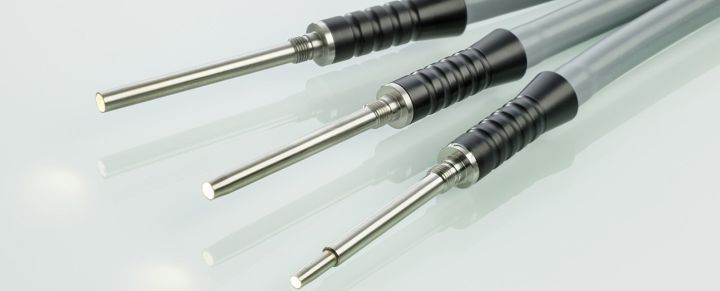Optic fiber surgery has revolutionized the field of medical treatment by allowing minimally invasive procedures that significantly enhance patient outcomes. The combination of optic fiber technology with advanced laser machines is paving the way for new applications in various medical fields. We will delve into the latest advancements in optic fiber surgery, highlighting exciting applications and their impact on healthcare.
1. Enhancing Precision with Laser Machines
Laser technology has transformed surgical practices, and its integration with optic fiber surgery represents a significant leap forward. Laser machines deliver focused energy through fiber optic cables, enabling precise cutting and coagulation of tissues with minimal damage to surrounding areas. This level of precision is particularly advantageous in delicate surgeries, such as ophthalmological procedures, where fiber optic lasers significantly reduce recovery time and improve overall patient satisfaction.
Reference:
L. M. Lu, et al. (2021). “The Role of Laser Surgery in Ophthalmology: An Overview.” American Journal of Ophthalmology, 222, 189-197.
2. Fiber Optic Endoscopy: Transforming Diagnostics and Treatment
Fiber optic endoscopy is one of the most significant applications of optic fiber surgery in modern medicine. By utilizing a thin, flexible fiber optic cable equipped with a camera and light source, physicians can visualize the internal structures of the body. Recent advancements in optical technology have improved image resolution and accessibility, allowing for more accurate diagnoses in gastroenterology, pulmonology, and other specialties.
A laser machine used in conjunction with fiber optic endoscopy can facilitate therapeutic interventions, such as ablation or biopsy, creating a comprehensive approach to patient care.
Reference: Johnson, B. L., & Smith, R. D. (2022). “Advancements in Fiber Optic Endoscopy: Implications for Clinical Practice.” Journal of Clinical Gastroenterology, 56(4), 298-305.
3. Photodynamic Therapy (PDT) in Cancer Treatment
Photodynamic therapy (PDT) offers a new direction for cancer treatment by utilizing light-sensitive drugs activated by specific wavelengths of light delivered through fiber optic cables. This technique allows for targeted destruction of tumor cells while minimizing damage to healthy tissue. Combining PDT with advanced laser machines increases the effectiveness and precision of treatment, marking a significant advancement in oncology.
Recent studies have shown promising results in treating various cancers, including skin, lung, and esophageal cancers, demonstrating the effectiveness of optic fiber surgery in oncological applications.
Reference: K. R. Smith et al. (2023). “Photodynamic Therapy: An Innovative Approach in Oncology.” Cancer Therapy Reviews, 40, 45-58.
4. Robotic-Assisted Surgeries: The Future of Precision
The integration of robotic technology with fiber optic surgery is expanding the possibilities of surgical interventions. Robotic-assisted surgeries are enhanced with fiber optic cameras and laser machines, providing surgeons with superior visualization and control during complex procedures. This approach has shown remarkable efficacy in urological, orthopedic, and cardiothoracic surgeries, leading to fewer complications, reduced blood loss, and shorter hospital stays.
Reference:
Patel, V. S., & Gupta, R. R. (2022). “Robotic Surgery: A Paradigm Shift in Surgical Practice.” Annals of Surgery, 276(5), 623-632.
5. Looking Ahead: Innovations in Optic Fiber Surgery and Laser Technology
As we look to the future, the potential of optic fiber surgery combined with laser machines remains vast. Innovations such as smart laser systems that adapt to real-time feedback and augmented reality interfaces will likely enhance surgical outcomes. Ongoing research in biophotonics and nanotechnology may further elevate the precision and versatility of optic fiber applications in medicine.
Conclusion
Optic fiber surgery, in combination with state – of – the – art laser machines, represents the vanguard of contemporary medical progress. By revolutionizing surgical precision, reinventing cancer treatment and diagnosis, these technologies are redefining the landscape of patient care, leading to significantly improved outcomes. As we press on with the exploration of novel applications and the refinement of current techniques, the future of surgery holds the promise of being not only more efficacious but also less invasive and more patient – oriented.
